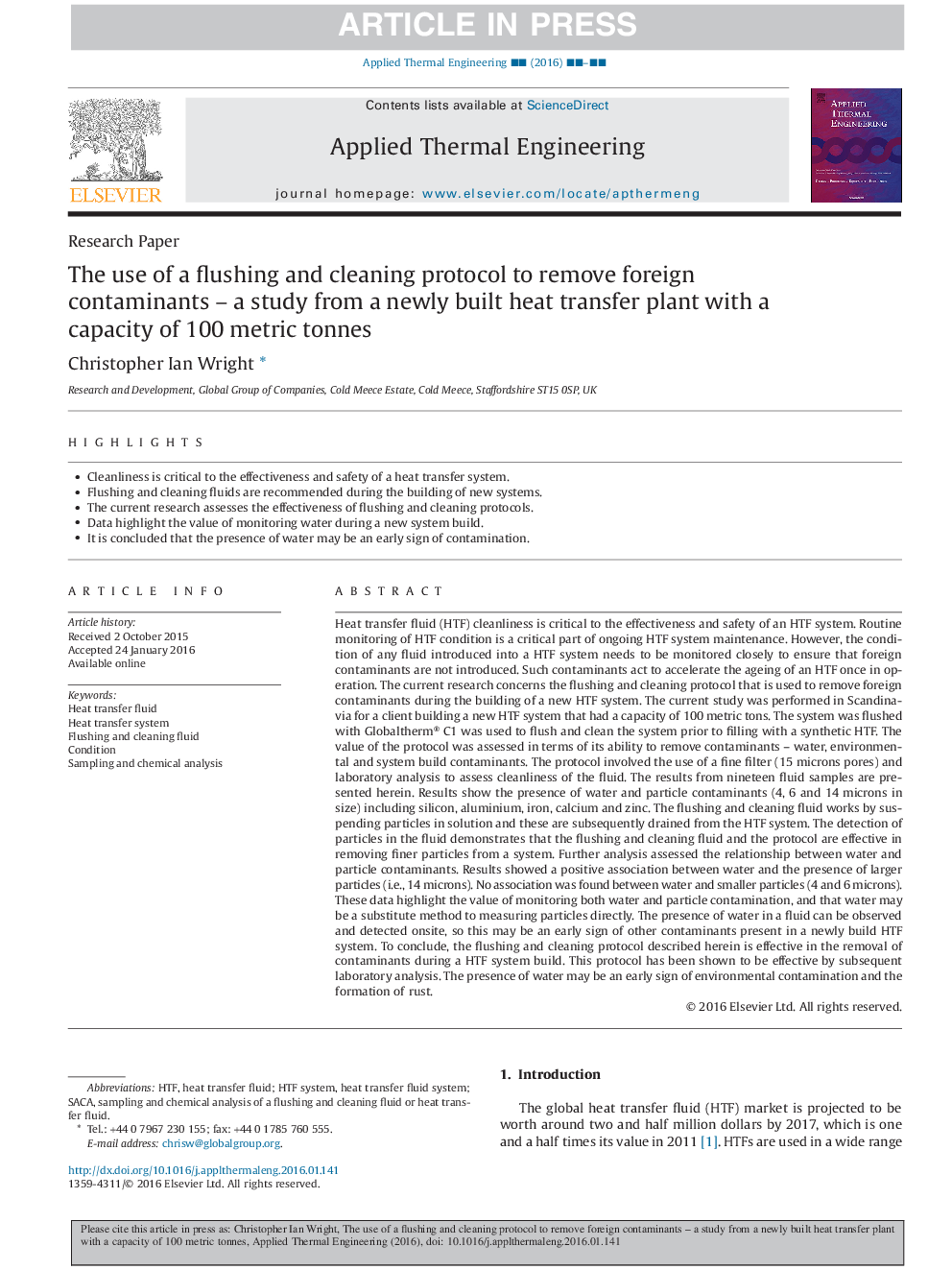| کد مقاله | کد نشریه | سال انتشار | مقاله انگلیسی | نسخه تمام متن |
|---|---|---|---|---|
| 7048086 | 1457127 | 2016 | 6 صفحه PDF | دانلود رایگان |
عنوان انگلیسی مقاله ISI
The use of a flushing and cleaning protocol to remove foreign contaminants - a study from a newly built heat transfer plant with a capacity of 100 metric tonnes
ترجمه فارسی عنوان
استفاده از یک پروتکل تخلیه و تمیز کردن برای حذف آلاینده های خارجی - مطالعه ای از یک کارخانه انتقال حرارت جدید با ظرفیت 100 تن
دانلود مقاله + سفارش ترجمه
دانلود مقاله ISI انگلیسی
رایگان برای ایرانیان
کلمات کلیدی
موضوعات مرتبط
مهندسی و علوم پایه
مهندسی شیمی
جریان سیال و فرایندهای انتقال
چکیده انگلیسی
Heat transfer fluid (HTF) cleanliness is critical to the effectiveness and safety of an HTF system. Routine monitoring of HTF condition is a critical part of ongoing HTF system maintenance. However, the condition of any fluid introduced into a HTF system needs to be monitored closely to ensure that foreign contaminants are not introduced. Such contaminants act to accelerate the ageing of an HTF once in operation. The current research concerns the flushing and cleaning protocol that is used to remove foreign contaminants during the building of a new HTF system. The current study was performed in Scandinavia for a client building a new HTF system that had a capacity of 100 metric tons. The system was flushed with Globaltherm® C1 was used to flush and clean the system prior to filling with a synthetic HTF. The value of the protocol was assessed in terms of its ability to remove contaminants - water, environmental and system build contaminants. The protocol involved the use of a fine filter (15 microns pores) and laboratory analysis to assess cleanliness of the fluid. The results from nineteen fluid samples are presented herein. Results show the presence of water and particle contaminants (4, 6 and 14 microns in size) including silicon, aluminium, iron, calcium and zinc. The flushing and cleaning fluid works by suspending particles in solution and these are subsequently drained from the HTF system. The detection of particles in the fluid demonstrates that the flushing and cleaning fluid and the protocol are effective in removing finer particles from a system. Further analysis assessed the relationship between water and particle contaminants. Results showed a positive association between water and the presence of larger particles (i.e., 14 microns). No association was found between water and smaller particles (4 and 6 microns). These data highlight the value of monitoring both water and particle contamination, and that water may be a substitute method to measuring particles directly. The presence of water in a fluid can be observed and detected onsite, so this may be an early sign of other contaminants present in a newly build HTF system. To conclude, the flushing and cleaning protocol described herein is effective in the removal of contaminants during a HTF system build. This protocol has been shown to be effective by subsequent laboratory analysis. The presence of water may be an early sign of environmental contamination and the formation of rust.
ناشر
Database: Elsevier - ScienceDirect (ساینس دایرکت)
Journal: Applied Thermal Engineering - Volume 101, 25 May 2016, Pages 373-378
Journal: Applied Thermal Engineering - Volume 101, 25 May 2016, Pages 373-378
نویسندگان
Christopher Ian Wright,
